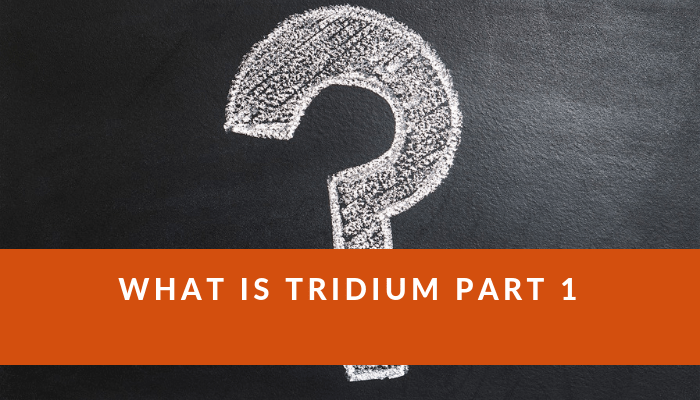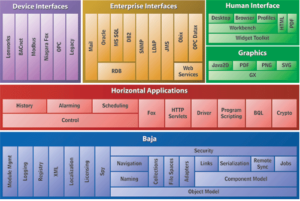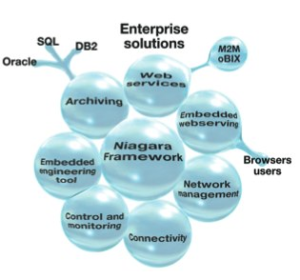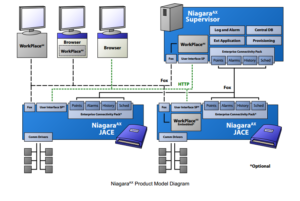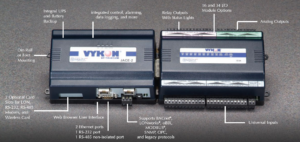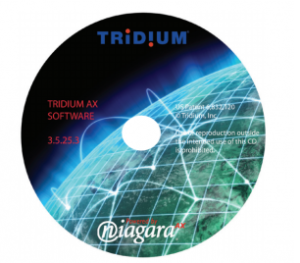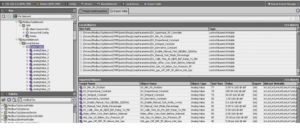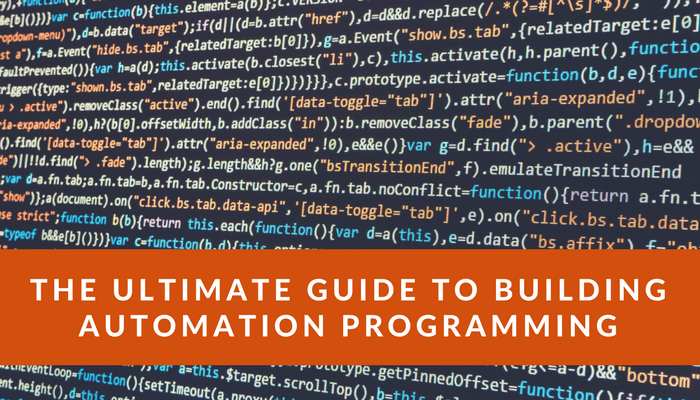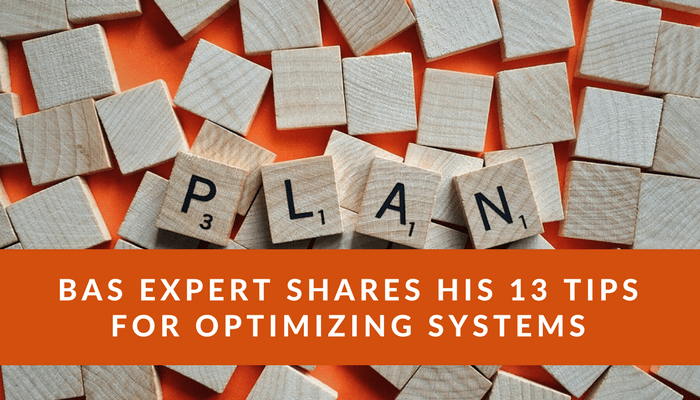I'm proud to say that for several months now this post is the number 2 result on Google Search for "What is Tridium". So if you are landing here for the first time, first off welcome!
The post below is part of a 2 part series that seeks to provide an overview of what Tridium is and what Tridium isn't. At the end of this article, I will provide you some related articles and a chance to learn more about building automation.
High-Level Niagara Video Overview
If you are a technician, engineer, operator, or programmer this guide will be very informative for you but you also need detailed training that provides guidance on how to do all of the common tasks in Niagara. Normally this requires you attending a $2,800 Niagara Certification Course and then hoping you remember what you learned.
Our online, on-demand, Niagara Basics course will teach you everything you need to know and because it comes with lifetime access you can continue to watch the course videos any time you need. Click here to learn more.
So what is Tridium?
Tridium is the latest buzz word in the Building Automation Industry.
There are three driving factors behind the adoption of Tridium:
- A large amount of third-party integration drivers
- A distributor model that provides open availability of the product
- A SDK that allows developers to customize their own integrations
Tridium is built on Niagara AX (or N4 as Tridium is calling the new platform) which is a proprietary framework.
Tridium itself is the brand name for the product built upon the AX framework. A typical Tridium device is comprised of several open and proprietary protocols provided on a scalable platform from which building operators can design their automation systems. This device called a JACE will be covered in greater detail later.
Tridium is typically delivered through smaller contracting outfits as a secondary product for the larger controls contractors (examples would be Siemens Talon, Johnson Controls Facility Explorer).
However, some companies have thoroughly embraced Tridium as their sole product. As of now, there are three main Tridium brands in the market these brands are Vykon, Honeywell Webs, and Johnson Controls Facility Explorer. (Author's note, yes I know there are more systems, but I picked the top three for the sake of my fingers).
As I said earlier Tridium is built on the Niagara AX framework. Prior to AX Tridium was built on the R2 Framework. Thus when someone tells you they have a Tridium R2 system they are referring to the framework on which their platform is built. In this guide, we will cover the four key parts to the Tridium offering: Niagara AX Architecture, Niagara Structures, Niagara Protocols, and Niagara Platforms.
Table of Contents :
-
Niagara AX Architecture
-
Niagara Structures
-
Niagara Protocols
-
Niagara Platforms
-
Struggling with Niagara?
Niagara AX Architecture
Niagara Software Stack
If you have followed my other posts you will recall that both the TCP/IP and OSI Layer consist of Protocol stacks. Tridium AX as a framework is no different.
The Tridium architecture is built around a series of software layers that contain protocols, functions, and transmission mediums. For those who are familiar with the Top-Down OSI model layer, the Tridium AX software stack may look a little disjointed.
However, I assure you the data flow is built along with OSI model standards and Tridium software functions just like any other protocol stack.
Niagara AX Structures
Bringing integration through embedded programming.
The Tridium Architecture is built around four key structures which each contain their own protocols and processes. These four structures are:
- Station- The station is a Java VM (or Virtual Machine) that runs the Niagara AX application. This is one of the reasons Tridium is so liked. Because of the station framework, users can run graphics and development applications through the station rather than needing additional software (usually).
- Workbench- This is the engineering tool from which the database is developed, API's (more on these later) are deployed, and various other engineering actions are conducted.
- Daemon- The Daemon processes or as I call them VM background services. Is the functionality to run the background processes that a user does not need to see but are vital for the station to function. If you are a geek like me and you want to know more about Java Daemons, you can read about them here and here.
- Web Browser- Ok, if you don't know what a web browser is then I honestly do not know how you got to my site. That being said, for those of you whose computer mystically ended up on my blog a web browser is a program that you use to access the data on the internet. In the case of Niagara AX the web browser allows the user to perform web service calls and writes via HTTP/HTTPS through the Tridium UI. One of the most common forms of this is the Web Workbench which allows operators to engineer systems directly from a web connection to their local or remote station.
Niagara AX Protocols
The Protocols of Tridium
Tridium through its API's and Java VM supports a slew of protocols. This platform supports the typical web services protocols that you would expect to find in the TCP/IP stack. Tridium also supports most of the open protocols of the BAS sector such as Lon, BACnet, and Modbus.
These protocols are open but depending on the protocol users are charged a fee for the object licenses or API's (drivers). Tridium also has its own proprietary protocols, these are described below:
- Fox Protocol- Fox protocol facilitates the communications between the stations and the workbench software. This is why when you go to integrate a Web server or a JACE you have to buy drivers that can communicate to your platform.
Because Fox is utilized to communicate between devices without a driver third-party systems cannot communicate to Tridium. Architecturally Fox sits at the top levels or application/transport levels of the TCP/IP Stack. Fox utilizes port 1911 to communicate with the fellow Tridium devices. - NiagarAd- NiagaraAd is the protocol for communication between workbench and daemon services. Whereas many competitive offerings utilize simple web services calls against XML data in their databases Tridium utilizes a proprietary protocol to call upon data.
Niagara AX Platforms
There are three main platforms from which the Tridium station collects and interfaces with the field devices. These devices are:
- Tridium JACE's (Java Application Control Engines)- The JACE is capable of being a standalone supervisory device and will host the station and daemon processes. As of currently, the workbench software cannot be embedded in a JACE.
Breakout of a Tridium Jace
- Tridium Supervisors- These devices go by many names, server, host, web supervisor but essentially the supervisor is the machine that is running the Station for the customer's site. supervisors usually provided enhanced trending, graphics, and alarming. Additionally, the supervisor is capable of hosting the Workbench software.
Tridium AX Software
- Client- Not to be confused with a client-server architecture the client is Tridiums way of saying the UI. The client allows the user to connect to the station via a web browser or via the Workbench software.
Example of the Tridium UI
Conclusion
Ok, so now you know a bit about Tridium. Before I tell you how to know more I want to know a bit about you. Something brought you here, you were hoping to learn a thing or two, maybe a make a decision on a system.
In the comments section below you can ask me those questions. Better yet if you'd like to talk to me directly you can contact me here.
Are you struggling with Niagara?
If you find learning Niagara difficult and the idea of shelling out $2,000 to $3,000 dollars to attend a certification class seems like too much then you need to enroll in our Niagara Basics course. Niagara Basics is an on-demand video training course that guides you through the most common Niagara tasks! Click on the image below to learn more.

In my next article in this series I will discuss the actual protocols that exist within the Niagara Framework.

